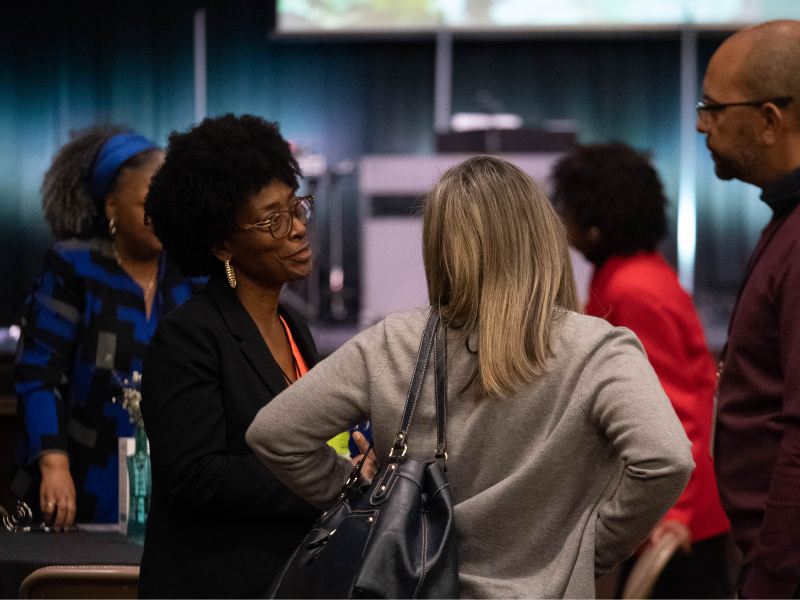
Arkansas creates educational opportunity. It’s time for Georgia to step up

Arkansas creates educational opportunity. It’s time for Georgia to step up
Key Points
- Arkansas is the fourth state in the U.S. to legislate universal educational opportunity — the others are Arizona, Utah, and Iowa.
- Georgia Senate passed the Georgia Promise Scholarship Act (SB 233) in a 33-23 vote. It will go on to the House next, where it has traditionally faced more opposition.
- Georgia Senate passed the Georgia Promise Scholarship Act (SB 233) in a 33-23 vote. It will go on to the House next, where it has traditionally faced more opposition.
Arkansas recently joined a growing list of states that have approved Education Scholarship Accounts, empowering parents to make the best decisions for their child’s unique educational needs.
The accounts, called Education Freedom Accounts (EFAs), will contain around $6,600 in funds per student every year. Families can then use the available funds to pay for education-related fees, including tuition, tutoring, textbooks, therapies, and other costs which have been approved by the state.
It will take three years to fully phase in the act. By the end of the third year, all students in Arkansas will be eligible for EFAs.
The creation of these accounts makes Arkansas the fourth state in the U.S. to legislate universal educational opportunity — the others are Arizona, Utah, and Iowa.
Now, Georgia could be next.
Last week, the Georgia Senate passed the Georgia Promise Scholarship Act (SB 233) in a 33-23 vote. It will go on to the House next, where it has traditionally faced more opposition.
If enacted into law, the Georgia Promise Scholarship Act would fund $6,000 per student every school year. Promise Scholarships would give families the financial freedom to select an educational environment that best fits their child’s needs. A wide range of educational expenses would be approved under the act, including tutoring, virtual classes, private school tuition, homeschool curriculum, special needs therapies, technology, college courses, and more.
In the wake of the pandemic, parents nationwide are demanding more options for their children’s education. Learning loss is one of many major crises to arise from nationwide lockdowns. At Georgia Center for Opportunity, we believe it is the state’s responsibility to help reverse that loss.
Families across the state need access to more opportunities now. With Promise Scholarships, Georgia’s children will have more opportunities to excel at school. Every child deserves empowerment through a high-quality education that works best for him or her. We believe that Georgia should lend support to every educational option for its students, including alternatives like homeschooling and virtual learning.
Promise Scholarships would give families the financial freedom to select an educational environment that best fits their child’s needs.
Promise Scholarships would give families the financial freedom to select an educational environment that best fits their child’s needs.
Over the past few years, more and more families have embraced alternatives to public education. While the majority of students across Georgia still attend public schools (and will likely continue to in the future), a growing minority of families are choosing differently. And, as the nation collectively faced an unprecedented pandemic, parents began to realize how many options were available to them outside the traditional school system.
Traditionally, families who select private schools or opt to homeschool receive no financial support to do so. Despite that choice, their tax dollars continue to fund public schools whose services they do not use.
Parents with special needs children struggle to find school systems that will accommodate their children’s needs. Often, they find that one facility lacks all the important resources they need so their children can thrive at school. While they could opt to build a hybrid program for their children, which might include home healthcare or virtual classes, those alternatives are cost-prohibitive.
Ultimately, we believe that tax dollars should follow each child, meeting their unique needs along the way. There is no one-size-fits-all solution when it comes to education. Public, private, home, and virtual education are of equal value, and as each family decides what is best for their children, Georgia should be willing to meet them where they are.
As the Georgia Promise Scholarship Act moves to the House, we urge you to contact your local representative to advocate for this bill. Our children can’t wait any longer for educational support that fits their individual needs and allows them to thrive. The future is depending on us.











